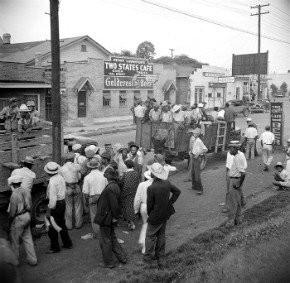The real Depression: The greatest generation needed welfare

Not long after the end of World War I, my great-grandfather sent his two school-aged sisters to an orphanage because he couldn’t afford to support them. To earn his meager wages in the feldspar mines, each morning he left behind his young wife with their own children, his elderly mother, and a third sister, who was older than the others but denied admission to the orphanage because of chronic illness. My great-grandmother left to run an errand one winter day and returned home to find that her invalid charge had fallen into the kitchen’s open fireplace and burned to death.
I did not learn this story until I had finished a Ph.D. in history and written a book about religion and the Great Depression. When I was a child in Appalachian North Carolina, my family joked about all the moonshining preachers and married cousins in our family tree, but no one told this story. My great-great aunts maintained a cold distance from the family that had abandoned them, though they prospered as adults. My great-grandparents never spoke of the desperate poverty that drove them to send away their own family. Stories so full of pain, sorrow, and shame often die with those who bear them.
For those who have benefited from the economic boom of the mid-20th century, the desperate days of the 1920s and the still worse days of the Depression often take on a rosy complexion in memory. The narrative of the Greatest Generation is that they suffered through the ravages of the Depression but emerged stronger. Franklin D. Roosevelt might have helped them back on their feet with works programs and Social Security, but they pulled together and lifted themselves still further. They fought a world war and won the war and the peace. They built cozy homes, went to college, raised families, and took them to church or synagogue every weekend. The Greatest Generation was independent and hardworking and grateful, while each generation since has grown lazier and greedier than the one before it.





